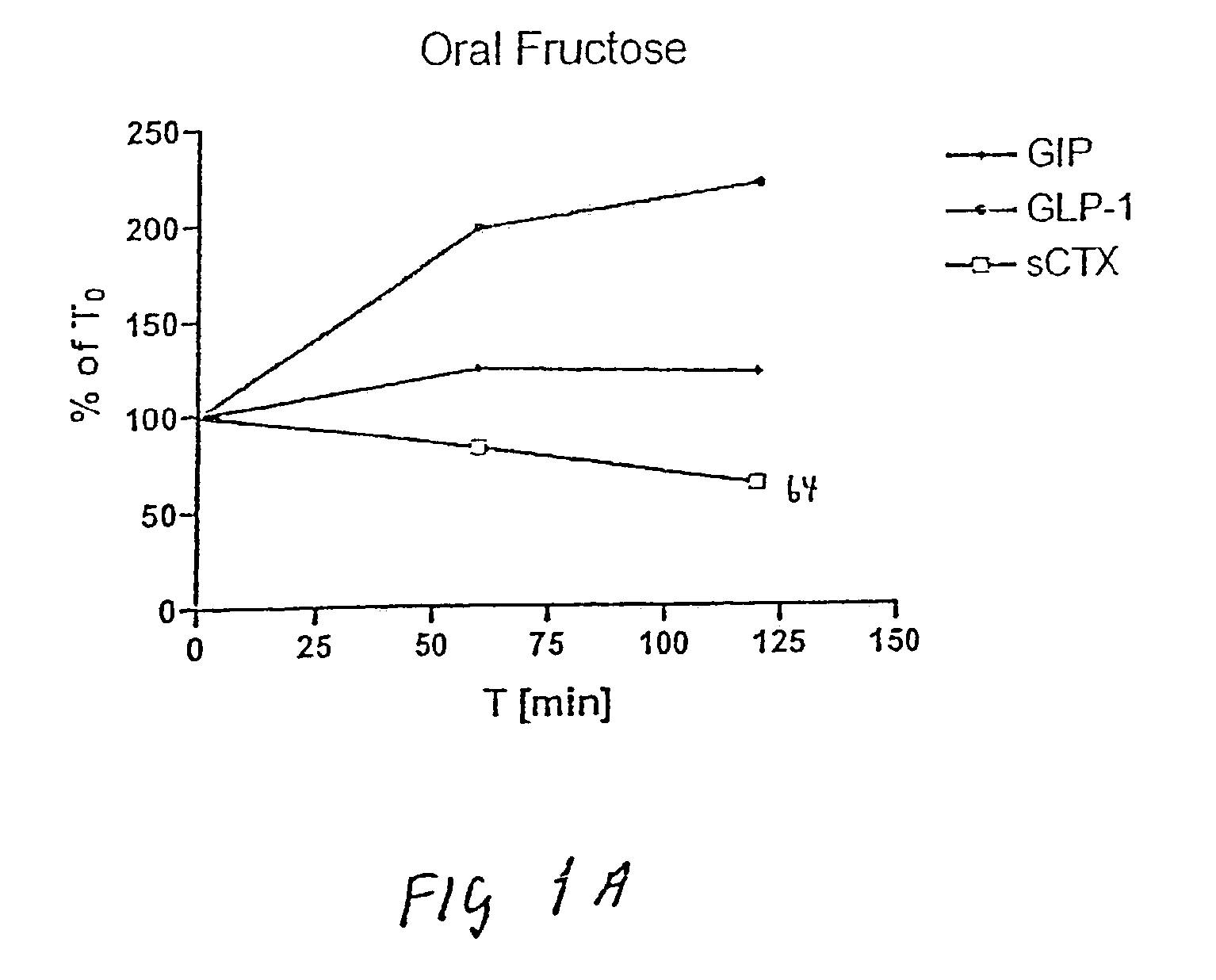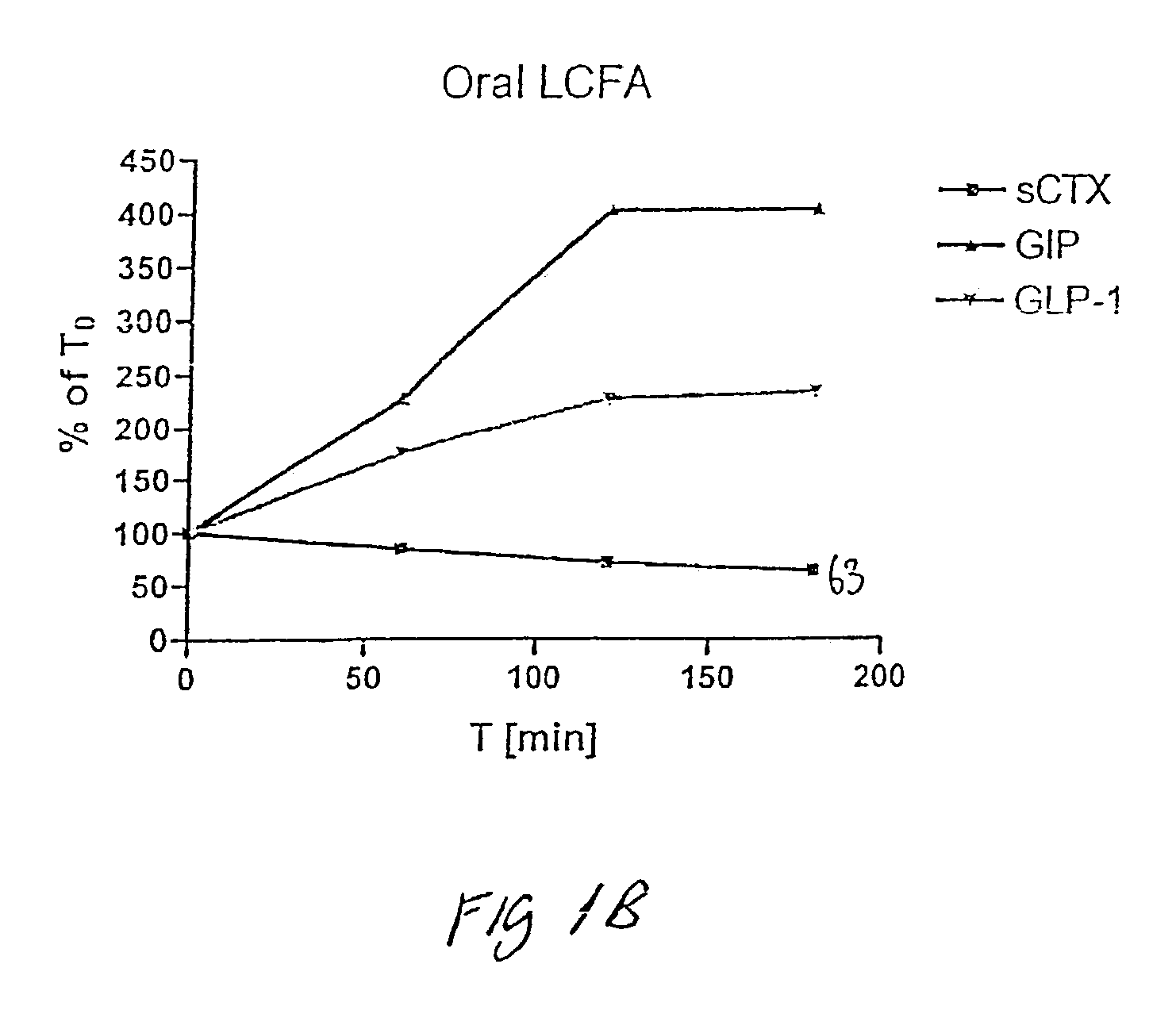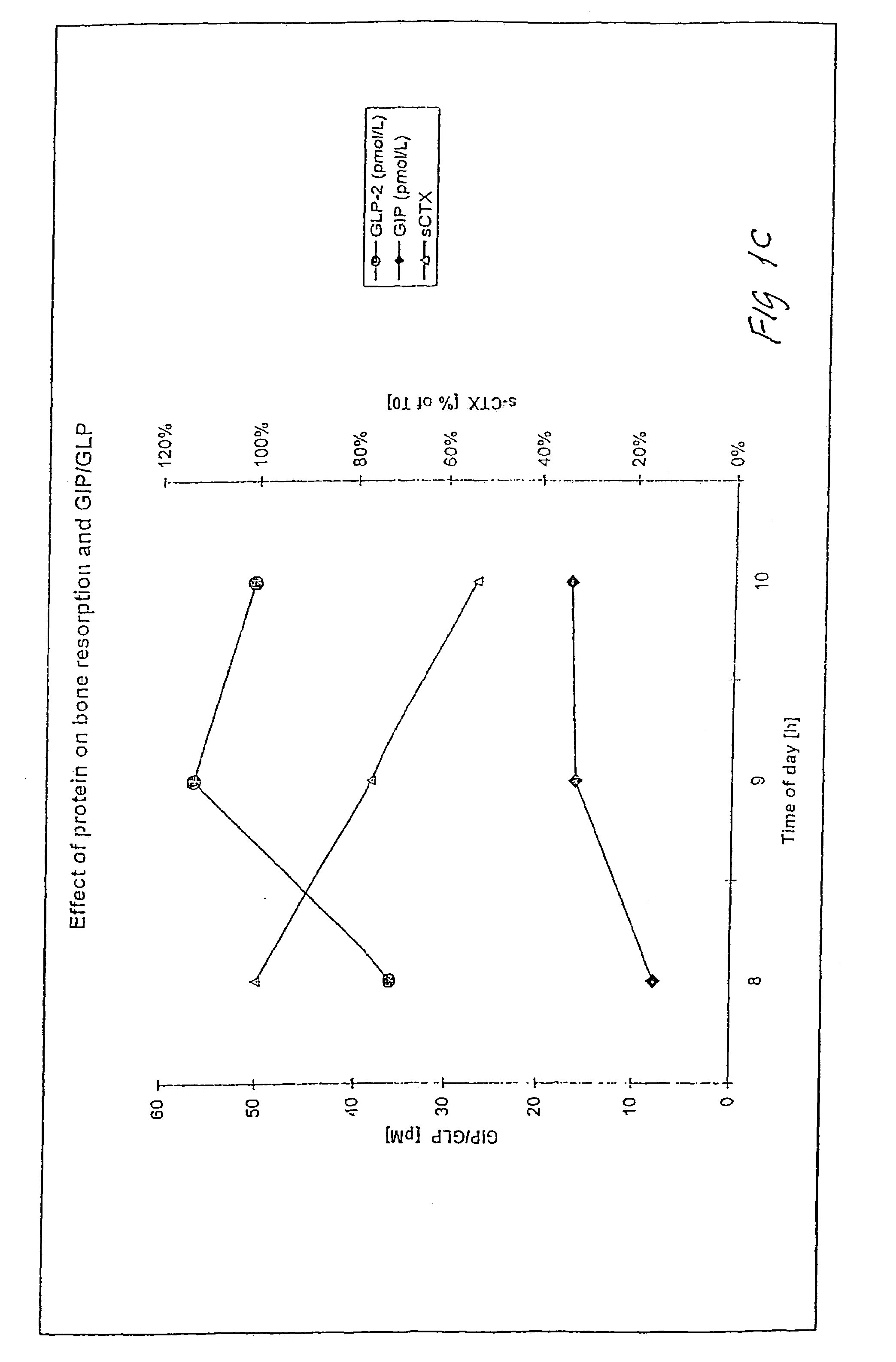Use of GLP for the treatment, prevention, diagnosis, and prognosis of bone-related and nutrition-related disorders
a technology for nutrition-related disorders and glp, which is applied in the field of prevention and treatment of bone-related or nutrition-related disorders, can solve the problems of alendronate administration causing undesirable side effects, estrogen failing to restore bone to the level of that in the skeleton of a young adult, and subsequent increase in bone fragility and susceptibility to fracture, etc., to achieve low stringency and high stringency
- Summary
- Abstract
- Description
- Claims
- Application Information
AI Technical Summary
Benefits of technology
Problems solved by technology
Method used
Image
Examples
example 1
5.3 Example 1
Effect of Oral Fructose on GLP-1, GIP, and Rate of Bone Resorption.
[0526]Twelve healthy women (ages 30–45) and men (ages 30–60) were included in a randomized, controlled cross-over study comparing the effects of oral fructose on GLP-1, on GIP and on bone turnover. Bone turnover was assayed by measuring the amount of S-CTX in a subject's serum. Briefly, an immunoassay was performed using monoclonal antibodies specific to S-CTX fragments generated exclusively from collagen type I degradation during resorption of mature bone tissue (Rosenquist et al., 1998, Clin. Chem. 44:2281–2289). The individuals had no medical history of diseases related to bone turnover such as cancer, rheumatoid arthritis or diseases compromising absorption from the gut or excretion / re-absorption from the kidney, or any other serious disease that might influence the conduct of the study. A general laboratory screening including hematology and serum chemistry gave no indication of specific organ dysfu...
example 2
5.4 Example 2
Effect of Oral Long Chained Fatty Acids on GLP-1, GIP, and Bone Resorption Rate.
[0529]Twelve healthy women (ages 30–45) and men (ages 30–60) with the same in- and exclusion-criteria as in Example 1 were included in a randomized, controlled cross-over study comparing the effects of oral long-chained fatty acids (LCFA) on GLP-1, on GIP and on bone turnover. Bone turnover was assayed by measuring the amount of S-CTX in a subject's serum. Briefly, an imunoassay was performed using monoclonal antibodies specific to S-CTX fragments generated exclusively from collagen type I degradation during resorption of mature bone tissue (Rosenquist et al., 1998, Clin. Chem. 44:2281–2289).
Sampling
[0530]Subjects fasted from 10 p.m. the evening prior to the experiment and initial blood samples were collected between 7:30 a.m. and 8:30 a.m. Immediately thereafter oral LCFA were administered. Blood samples were collected at precisely 1, 2, 3, 6 and 9 hours after the first blood sample was dra...
example 3
5.5 Example 3
Effect of Oral Protein on GLP-2, GIP, and Bone Resorption Rate.
[0532]Twelve healthy women (ages 30–45) and men (ages 30–60) with the same in- and exclusion-criteria as in Example 1 were included in a randomized, controlled cross-over study comparing the effects of oral protein on GLP-2, on GIP, and on bone turnover. Bone turnover was assayed by measuring the amount of S-CTX in a subject's serum. Briefly, an imunoassay was performed using monoclonal antibodies specific to S-CTX fragments generated exclusively from collagen type I degradation during resorption of mature bone tissue (Rosenquist et al., 1998, Clin. Chem. 44:2281–2289).
Sampling
[0533]Subjects fasted from 10 p.m. the evening prior to the experiment and initial blood samples were collected between 7:30 a.m. and 8:30 a.m. Immediately thereafter, protein was administered. Blood samples were collected at precisely 1, 2, 3, 6 and 9 hours after the first blood sample was drawn. A washout period of 2 weeks was instit...
PUM
| Property | Measurement | Unit |
|---|---|---|
| particle size | aaaaa | aaaaa |
| clotting time | aaaaa | aaaaa |
| energy ratio | aaaaa | aaaaa |
Abstract
Description
Claims
Application Information
 Login to View More
Login to View More - R&D
- Intellectual Property
- Life Sciences
- Materials
- Tech Scout
- Unparalleled Data Quality
- Higher Quality Content
- 60% Fewer Hallucinations
Browse by: Latest US Patents, China's latest patents, Technical Efficacy Thesaurus, Application Domain, Technology Topic, Popular Technical Reports.
© 2025 PatSnap. All rights reserved.Legal|Privacy policy|Modern Slavery Act Transparency Statement|Sitemap|About US| Contact US: help@patsnap.com



